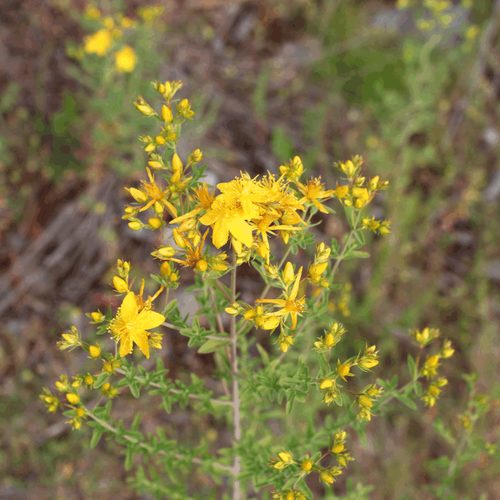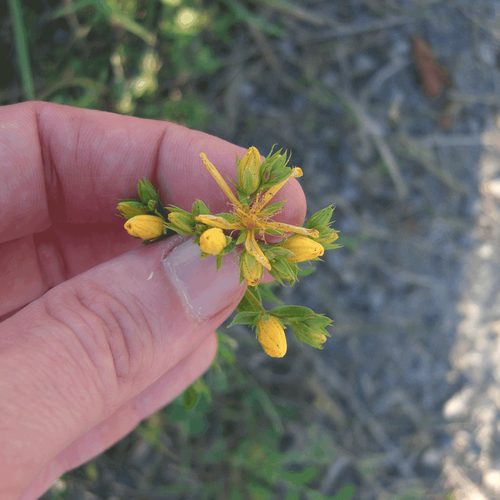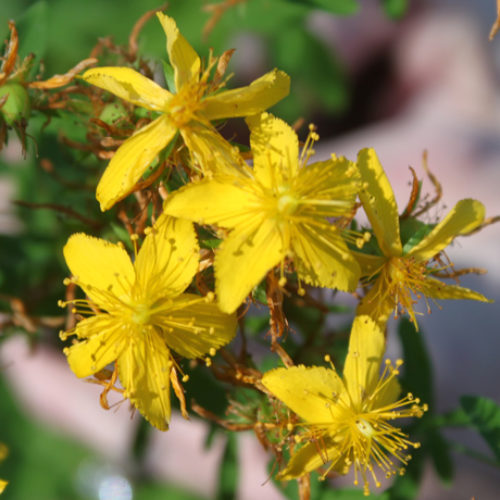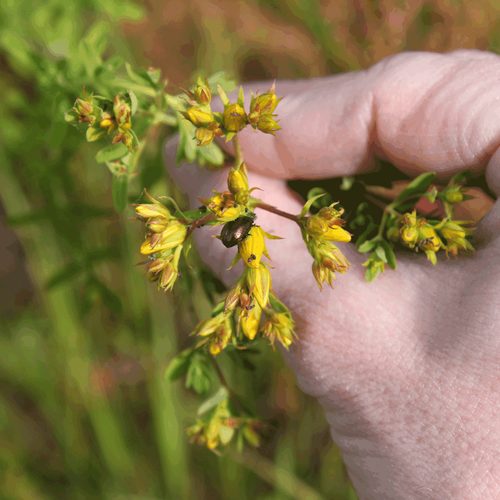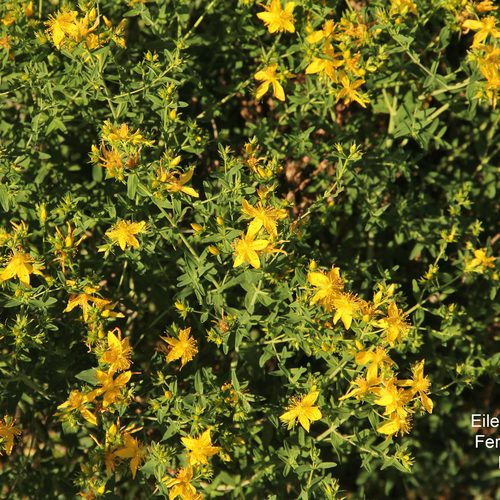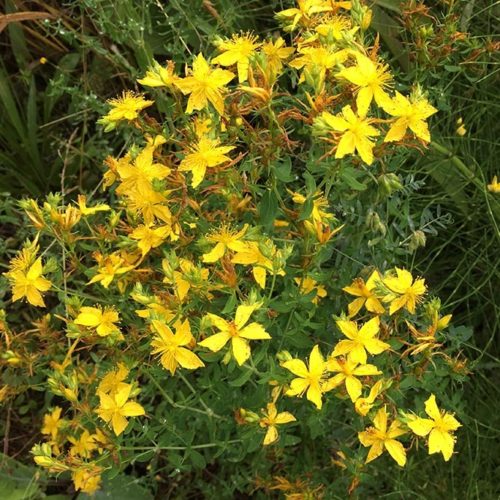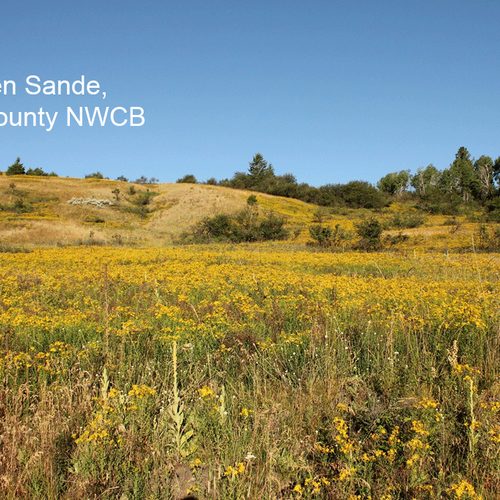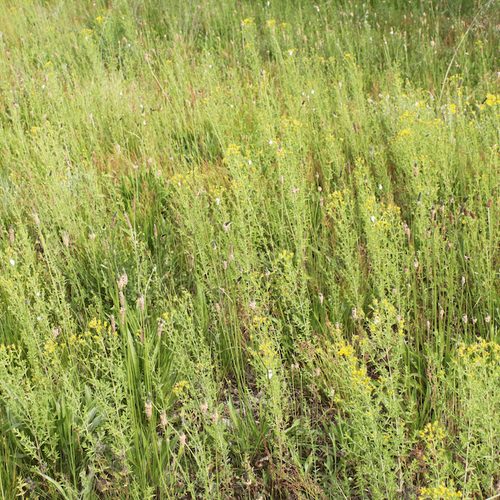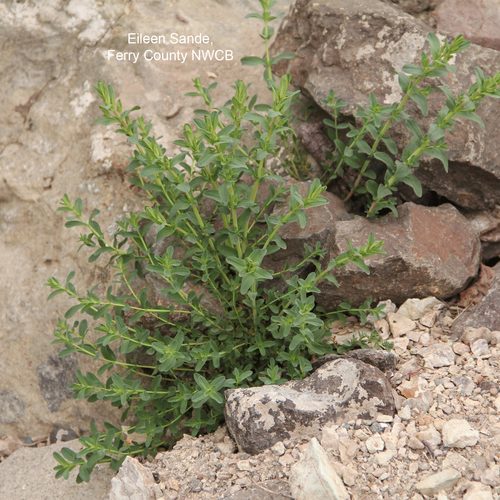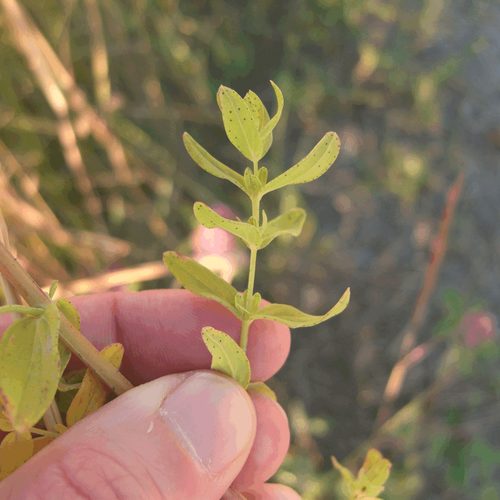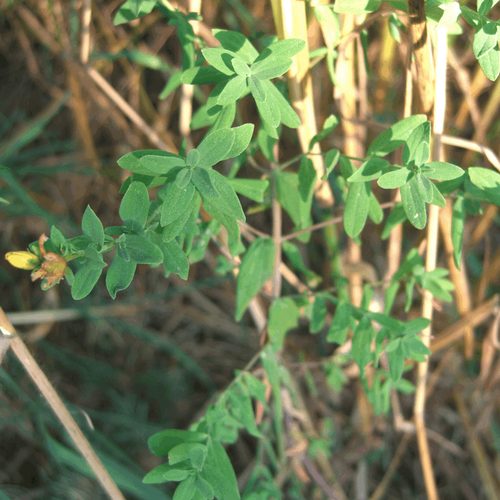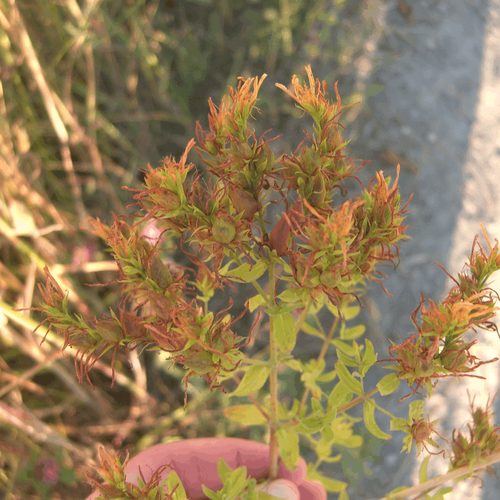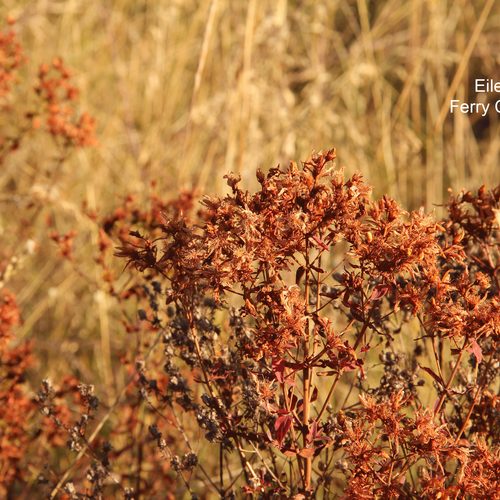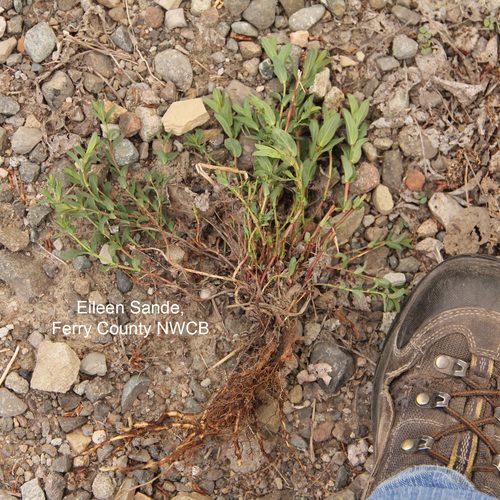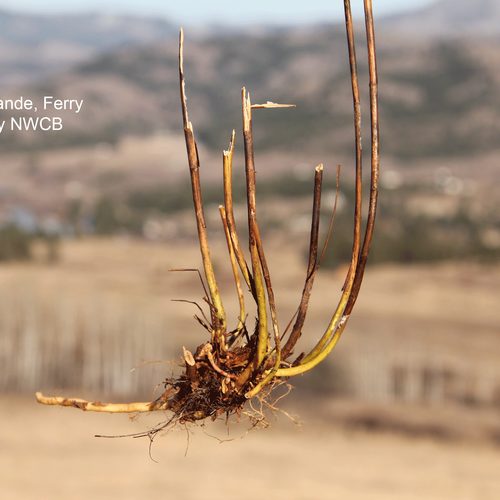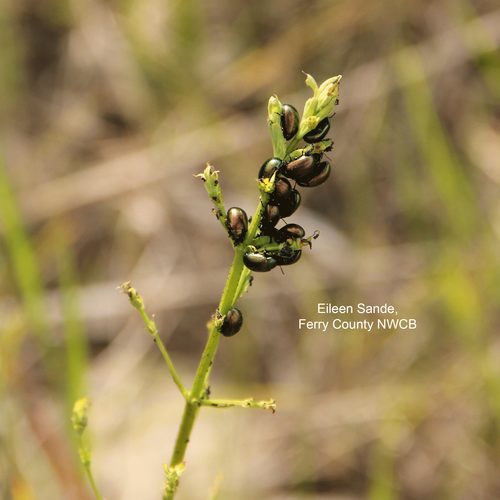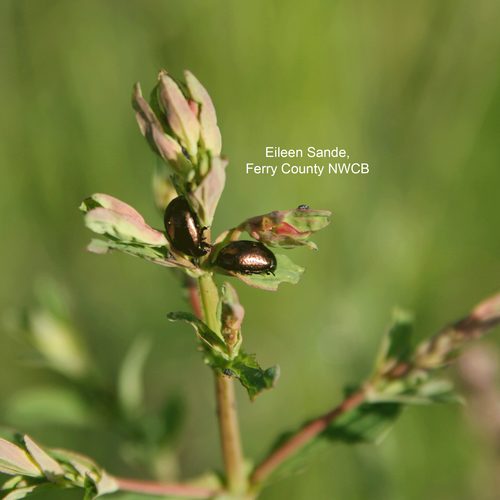Common St. Johnswort
Hypericum perforatum
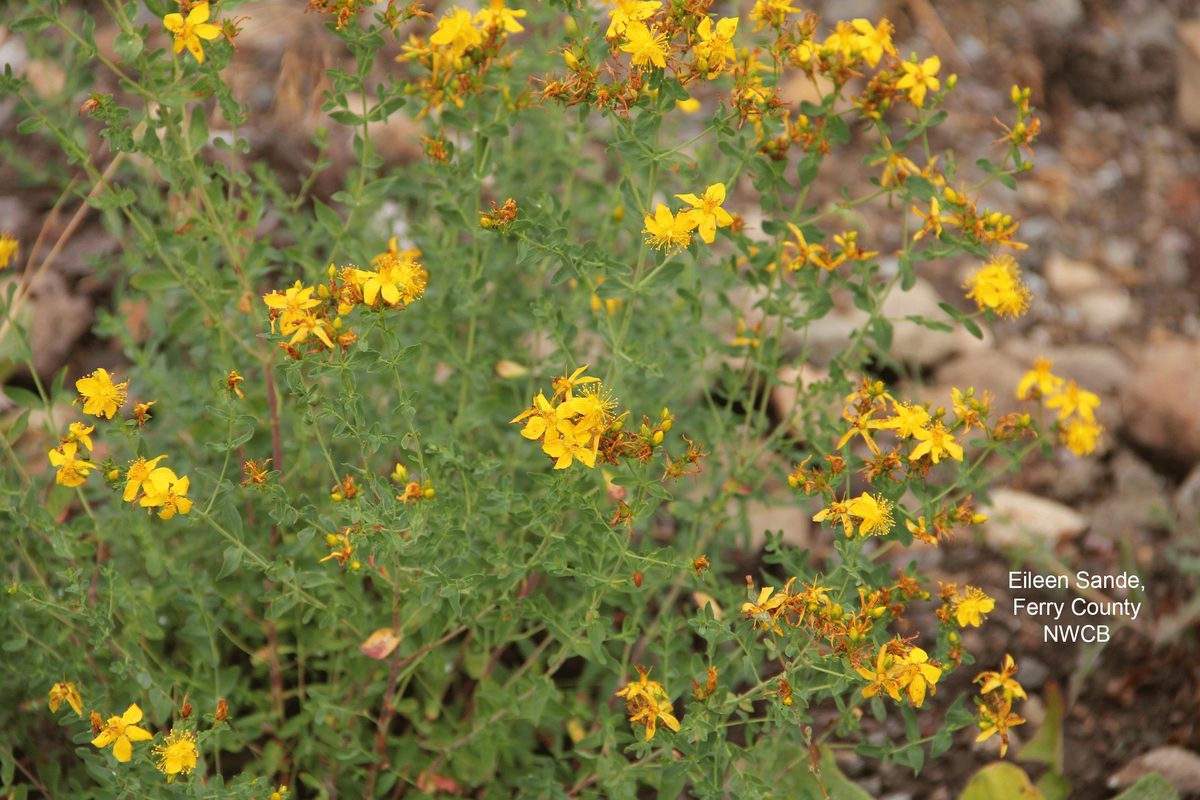
Family: Clusiaceae
Other Common Names: St. John's wort, klamath weed, common goatweed and tipton weed
Weed class: C
Year Listed: 1988
Native to: Europe, Asia and Northern Africa
Is this Weed Toxic?:
humans, livestock
Why Is It a Noxious Weed?
Common St. Johnswort spreads easily to new sites. Over-exposure to common St. Johnswort can cause various animal health problems including severe skin lesions and necrosis when their skin becomes hypersensitive to sunlight. Find out more about common St. Johnswort toxicity in our booklet: Protect Your Horses and Livestock From Toxic Plants.
How would I identify it?
General Description
Common St. Johnswort is an upright perennial herbaceous plant which typically grows 1 to 2.5 feet in height. It has tap roots and short rhizomes and its stems are freely branched.
Flower Description
Flowers are yellow, star-like and have 5 petals with tiny black dots on the margins. Flowers occur in clusters at the ends of stems with 25 to 100 flowers per cluster.
Leaf description
Leaves are oppositely arranged on stems, narrow, lance shaped and 1 to 2 inches long. They are oppositely stalkless and have pointed tips. Each leaf is spotted with tiny translucent or purplish-black dots.
Stem description
Stems are reddish, single or multiple, smooth, somewhat two-edged, woody at the base, and branching out toward the top of the plant.
Fruit Seed Description
Flowers form capsules that contain small (1 mm) dark brown seeds.
May Be Confused With
Common tansy a Class C noxious weed, and tansy ragwort a Class B noxious weed, may be mistaken for common St. Johnswort. Click here to see a comparison of the flowers of these species. If you need help with plant identification, contact your county noxious weed coordinator.
Where does it grow?
Infestations spread rapidly on disturbed, well drained sites such as roadways, trails, meadows, grasslands, overgrazed range, logged areas, and similar type sites. Please click here to see a county level distribution map of common St. Johnswort in Washington.
How Does it Reproduce?
Common St. Johnswort spreads both by underground rhizomes, above-ground creeping stems, and by seeds that are dispersed by wind and animals. One plant can produce up to 15,000 to 34,000 seeds per year that are viable for up to 30+ years.
How Do I Control It?
Mechanical Control
Pulling should only be considered an option on new or small infestation sites. Repeated pulls will be necessary to ensure removal of the whole plant and any lateral roots. Do not leave plants at the site since vegetative growth will occur, and the seed source will remain. Tillage is effective when repeated in croplands. Mowing is a limited option depending both on site accessibility and whether seed formation has occurred. Repeated cuts are necessary.
Cultural Control
St. Johnswort seedlings will readily establish in disturbed situations. The combination of site-specific range management (which includes encouragement of beneficial plants species) will help prevent new infestations and re-infestations.
Biological Control
The Klamath weed beetles, Chrysolina quadrigemina and Chrysolina hyperici, adults and larvae feed on the leaves of common St. Johnswort. The St. Johnswort moth, Aplocera plagiata, larvae feed on the leaves. The St. Johnswort root borer, Agrilus hyperici, larvae feed within plant roots. For more information about the biological control of common St. Johnswort, please visit WSU Extension Integrated Weed Control Project.
Herbicide Control
Please refer to the PNW Weed Management Handbook, or contact your county noxious weed coordinator.
For More Information
See our Written Findings for more information about common St. Johnswort (Hypericum perforatum).
Asotin County NWCB Fact Sheet on common St. Johnswort
Whatcom County NWCB Fact Sheet on common St. Johnswort
Lincoln County NWCB Brochure on common St. Johnswort
Control Options on common St. Johnswort from Whatcom County NWCB



